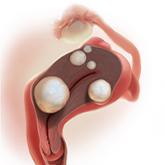Article

2022 Update on abnormal uterine bleeding
- Author:
- Howard T. Sharp, MD
- Marisa R. Adelman, MD
Insights into the COVID-19 vaccine’s effects on menstrual cycle irregularities; results of an RCT that examined the use of drospirenone 4 mg in a...
Article

2021 Update on abnormal uterine bleeding
- Author:
- Howard T. Sharp, MD
- Marisa R. Adelman, MD
Expert perspectives on a new cryotherapy device for endometrial ablation, the importance of quality of life issues in women with fibroids, and...
Article

2019 Update on abnormal uterine bleeding
- Author:
- Howard T. Sharp, MD
- Marisa R. Adelman, MD
These experts discuss the factors that incur increased risk for malignant endometrial polyps, the relationship between chronic...
Article

2018 Update on abnormal uterine bleeding
- Author:
- Howard T. Sharp, MD
- Marisa R. Adelman, MD
Coverage and clinical perspective on recent AUB studies, including optimal procedure order for evaluation, cost-effectiveness of 4 treatment...
